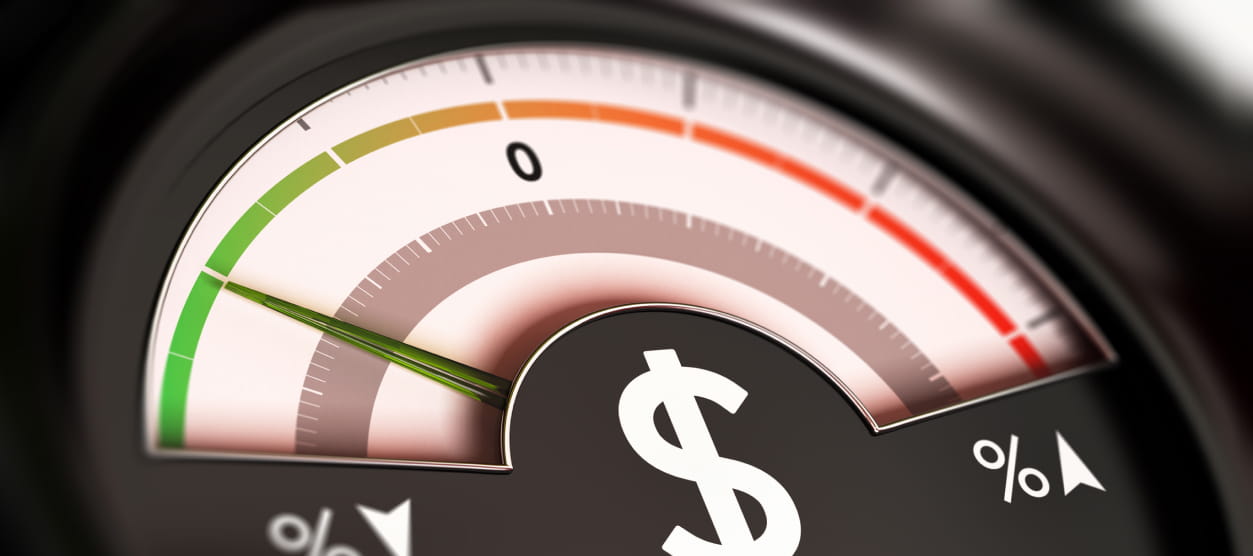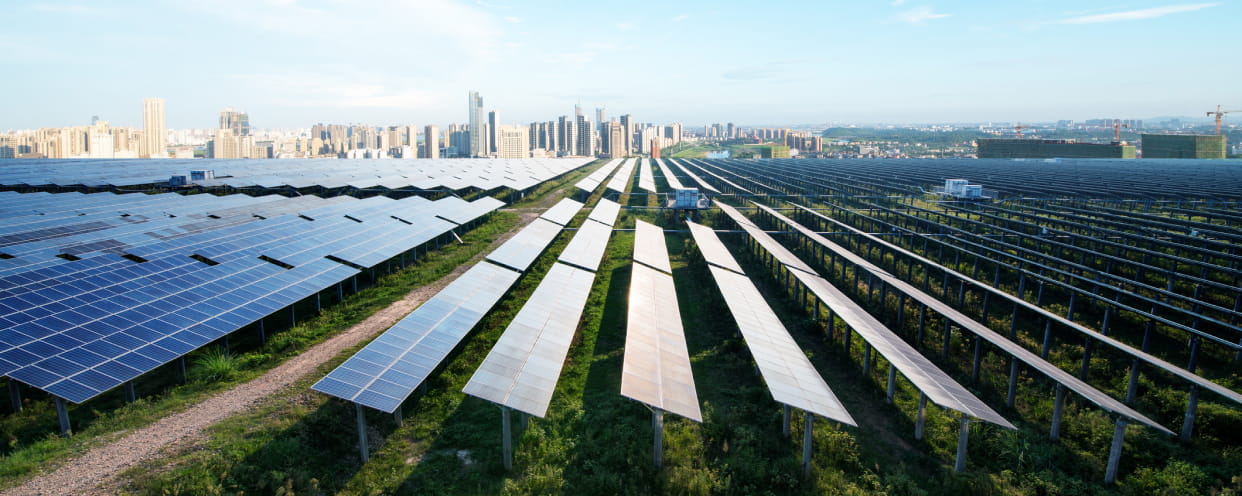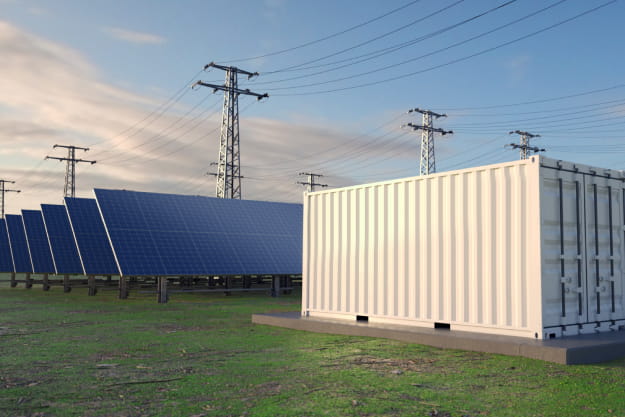

Businesses in California face unique hurdles that make it challenging to establish and maintain a lucrative enterprise. In fact, more than 350 companies moved their headquarters out of California between 2018 and 2021 ― an exodus that shows no signs of slowing.*
But for determined entrepreneurs, the state’s high taxes, steep operational costs and insurance complexities are worth the profit potential and other benefits of doing business in the Golden State.
California’s commercial electricity costs are the third highest in the nation, averaging 21.6 cents per kilowatt-hour (kWh) in 2022.* This leaves business owners in search of cost-effective strategies to minimize these operational expenses. Reducing energy consumption can help, but only to an extent.
Thanks to utility-imposed demand charges, even if a commercial facility lowers its monthly usage, even a brief spike in consumption can add thousands in additional charges.
Fortunately, there’s a way to reduce these costs with solar plus battery storage.
But first, it’s important to understand what demand charges are, and the impact they have on commercial utility bills.
What is a Demand Charge?

Demand charges represent energy providers’ high costs for electricity at times of highest or peak consumption. When demand exceeds supply, utilities turn to generating and distributing electricity from peaker plants ― sources that sit idle most of the time. Peaker plants run primarily on oil and natural gas and are designed to ramp up quickly, commanding a much higher price per kilowatt-hour (kWh) than a typical baseload power plant.*
The theoretical basis for imposing demand charges is to cover the costs of operating at a higher grid capacity. In an effort to meet the immediate energy needs of commercial and industrial customers, utilities charge a separate tariff based on peak kilowatt (kW) usage. This spike in energy consumption can occur at any 15-minute interval in the billing cycle. Utilities take the average kW from your highest demand interval ― this is your maximum demand ― and multiply it by their flat rate to calculate your demand charge.
Learn More About Demand Charges
Aside from covering the generation and distribution capacities required to accommodate customers’ energy spikes, demand charges were designed to incentivize high-load ratepayers to reduce consumption during peak periods.*
In California, utilities also implement coincident or on-peak demand charges.* These rates correspond with time-of-use (TOU) rate windows, where utilities charge higher demand fees when the systemwide demand for electricity is the greatest. Coincident demand charges vary by season, day of the week and time of day.
For instance, a business in California that experiences a demand spike in the middle of a hot summer day would have a higher demand charge than a business with the same kW consumption spike early in the morning.
This means, in addition to connection and distribution charges, a commercial customer may see four different types of charges on their California electric bill:
Off-peak energy charge
Standard charge for energy consumption (e.g., 25 cents per kWh)
On-peak energy charge
Energy consumption charge during a pre-defined, peak times (e.g., 45 cents per kWh)
Maximum (non-coincident) demand charge
Highest demand spike (kW) x flat rate that can occur during on-peak or off-peak hours
On-peak (coincident) demand charge
Highest demand spike (kW) x flat rate for on-peak hours
Think of energy charges as the total energy usage over a billing cycle and demand charges as the intensity of power your facility requires at any given moment.
Since demand charges are based on peak energy usage, even a short period of high demand can result in significant charges. This can have major cost implications for commercial and industrial businesses in California that have fluctuating energy needs. In fact, demand charges can account for as much as 70 percent of commercial electric bills.*
Demand Charge Management in California
What can California businesses do to minimize these charges and reduce overhead? Keep in mind that reducing your facility’s energy use won’t always lead to a proportional reduction in demand charges. In order to control these charges, you must manage your facility’s peak demand and optimize your energy use during critical periods.
What are the best demand charge management strategies? *

- Modifying Equipment: Installing energy-efficient equipment and downsizing equipment to fit the job can help lower your facility’s peak demand. This strategy has limited impact.
- Load Shifting: Redistributing consumption by shifting your energy use from high-demand times to low-demand times can help lower maximum demand. Your total consumption won’t change, but shifting your usage to off-peak hours can minimize coincident demand charges.
- Peak Shaving: Reducing your electricity consumption for a short period of time (when your demand is typically high) can reduce usage spikes. This is also an effective way to smooth out demand spikes during on-peak hours when rates are the highest.
If your facility has certain energy-intensive timeframes that can’t be moved or encounters unpredictable busy periods that may occur during on-peak hours, these demand management strategies can be difficult to execute. However, modern technologies can help California business owners modify their consumption.
Technologies to Reduce Demand Charges

In order to choose the best course of action, you must first understand when and how your business consumes electricity. Each facility has a unique load profile, meaning a chart that illustrates your energy usage over time. You’ll need a detailed breakdown of your monthly usage patterns ― including the consumption characteristics of all your equipment ― to determine your most effective demand management strategy.
The following technologies, or a combination of these, can help businesses in California reduce their maximum demand:
Equipment Timers and Sensors
Turning on high consumption loads at the same time each day could be driving up your demand charges. Installing sensors to turn lights on as needed and timers to power down heating and cooling equipment, for instance, could help optimize energy usage.
Commercial Solar Panels
If most of your energy demand occurs during the day, solar panels could lower your daytime need for grid electricity. Assuming your demand spike also occurs when the sun’s rays are most intense, your solar array could lower this maximum demand and effectively minimize your demand charges. It’s important to note that demand reductions from PV-only systems can be unreliable ― one cloudy or rainy day could allow a consumption spike that drives up your demand charges for the month.
Solar with Battery Storage
For many commercial and industrial customers, it’s impossible to shift electric loads to different time intervals or shave high-energy loads to avoid demand spikes. When this is the case, a facility can install solar plus battery storage to do so. Storage technology enables businesses to save the energy their solar panels produce and use it during on-peak hours or whenever the facility anticipates a surge in energy consumption.
Commercial Generators
Turning on high consumption loads at the same time each day could be driving up your demand charges. Installing sensors to turn lights on as needed and timers to power down heating and cooling equipment, for instance, could help optimize energy usage.
Which Demand Management Strategy is Best for Your Business?

The best strategy for reducing your facility’s demand charges will depend on your particular type of business. For example, office buildings and schools use the majority of their electricity during the day and could benefit from light sensors and solar panels to curtail daytime demand.
Restaurants tend to have a lot of evening energy usage and spikes during the dinner rush, while auto shops run machinery in spurts throughout the day. These businesses could benefit from storing energy in a commercial battery and discharging it as needed.
In terms of demand charge management, solar plus battery storage is the most effective way to control consumption behavior and move usage from one time period to another without disrupting operations. Commercial storage also works best in TOU markets like California by enabling a business to shift high loads and shave peak loads to smooth out demand spikes.
Discover what strategy may work best for your facility
Demand Charge Reduction Examples in California

To illustrate this impact, let’s look at examples in each of California’s IOU territories and see how demand charges may be reduced by solar and solar with battery storage.
Let’s assume it’s summertime in the Golden State. Our hypothetical business is a retail shop that uses a majority of its energy during the day. The maximum demand from the highest 15-minute interval during this billing cycle is 91.5 kW. For simplicity’s sake, we’ll say the max demand and the on-peak demand are the same kW.
Installing solar panels on this retail shop’s rooftop produces 13.6 kW of energy on the same day and time of the demand spike, which reduces the max demand to about 78 kW.
Adding battery storage to the solar array shaves the peak load even further, by nearly 28 kW, which reduces the max demand to ~50 kW.
What kind of impact does shaving these electric loads have on demand charges?

Southern California Edison (SCE)
In SCE territory, the highest rates for businesses occur in the TOU period from 4-9 p.m. on weekdays in the summer.* If this retail shop experienced a demand spike from 4:15 to 4:30 p.m. on a Friday in July, that on-peak demand rate is twice as much as the standard maximum demand charge.
Adding together the two types, the retail shop will be billed about $5,780 in demand charges alone for that one month.
Installing commercial solar panels would reduce the retail shop’s maximum demand charges by $287 and its on-peak demand charges by $571. That’s a total bill reduction of $858 in that billing cycle alone.
Installing solar plus battery storage would reduce its maximum demand charges by $878 and its on-peak demand charges by $1,746. That’s a total bill reduction of $2,624 per month during the summer, which is 199% more than a solar-only system would generate.
| Utility Details | Without Solar | With Solar | With Solar + Battery | ||||||
|---|---|---|---|---|---|---|---|---|---|
| Utility | Plan | Summer max demand rate | Summer on-peak demand rate | Max demand charges | On-Peak demand charges | Max demand charges | On-Peak demand charges | Max demand charges | On-Peak demand charges |
| SCE | GS-2-TOU (Option D) | $21.14 | $42.02 | $1,934.52 | $3,845.25 | $1,647.23 | $3,274.20 | $1,056.37 | $2,099.74 |
Rates sourced from Energy Toolbase

San Diego Gas & Electric (SDG&E)
SDG&E has some of the highest rates in the nation. The utility’s highest rates for commercial ratepayers also fall into the summer weekday time frame between 4 and 9 p.m.*
On the same day in July, if the retail shop experienced a demand spike in this TOU window, SDG&E would bill more than $50 per kW for an on-peak demand spike. Combining both charges, the shop would see an electric bill with $7,881 in demand charges for the month.
Installing commercial solar would reduce the shop’s maximum demand charges by $480 and on-peak demand charges by $690, for a total bill reduction of $1,170 that month.
Installing solar plus battery storage would reduce its maximum demand charges by $1,467 and its on-peak demand charges by $2,111. That’s a total bill reduction of $3,578 per month during the summer, which is 206% more than a solar-only system would generate.
| Utility Details | Without Solar | With Solar | With Solar + Battery | ||||||
|---|---|---|---|---|---|---|---|---|---|
| Utility | Plan | Summer max demand rate | Summer on-peak demand rate | Max demand charges | On-Peak demand charges | Max demand charges | On-Peak demand charges | Max demand charges | On-Peak demand charges |
| SDG&E | AL-TOU | $35.31 | $50.82 | $3,231.16 | $4,650.24 | $2,751.31 | $3,959.64 | $1,764.41 | $2,539.31 |
Rates sourced from Energy Toolbase

Pacific Gas & Electric (PG&E)
PG&E has the most expansive footprint of the three big utilities, covering a 70,000 square-mile service area in northern and central California.* While the utility has business plans that include on-peak demand charges, the plan best suited for a retail shop (medium-sized businesses with moderate energy use) does not.
Installing commercial solar would reduce the shop’s maximum demand charges by $264 in a single month, while adding solar with storage would lead to a bill reduction of $808.
This PG&E example also illustrates the significant impact that on-peak demand charges can have on a commercial electricity bill in California.
| Utility Details | Without Solar | With Solar | With Solar + Battery | ||
|---|---|---|---|---|---|
| Utility | Plan | Summer max demand rate | Max demand charges | Max demand charges | Max demand charges |
| PG&E | B-10 | $19.44 | $1,778.95 | $1,541.76 | $971.42 |
Rates sourced from Energy Toolbase
The chart below depicts a side-by-side analysis of how the retail shop would be billed for demand charges in the three different California IOUs ― and the financial benefit of installing solar and solar with battery storage.
| Analysis | |||||
|---|---|---|---|---|---|
| Utility | Total demand charges per month without solar | Total demand charges per month with solar | Total demand charges per month with solar + batt | Monthly bill reduction with solar (summer only) | Monthly bill reduction with solar + battery (summer only) |
| PGE | $1778.95 | $1514.76 | $971.42 | $264.19 | $807.54 |
| SCE | $5779.77 | $4921.43 | $3156.11 | $858.34 | $2623.67 |
| SDG&E | 7881.40 | $6710.95 | $4303.72 | $1170.45 | $3577.68 |
Minimize Demand, Maximize Reliability
On-site clean energy generation ― hosting solar panels on your roof or adding a solar canopy to your parking structure ― can be an effective demand charge mitigation tactic if your peak demand overlaps with peak sun hours.
Pairing solar with commercial battery storage, however, allows for more control over your facility’s energy consumption through load shifting and peak shaving. By storing energy in a battery to use at a later time, a commercial facility can also improve its energy reliability by saving energy for when it’s needed most. During times when the grid is stressed or there’s a shortage of electricity, utility providers often struggle to meet the high demands of commercial and industrial facilities.

By relying on the energy stored in a commercial battery, businesses in California can reduce their immediate power needs from the grid, minimize demand charges and employ clean energy from the sun to keep operations running smoothly.

